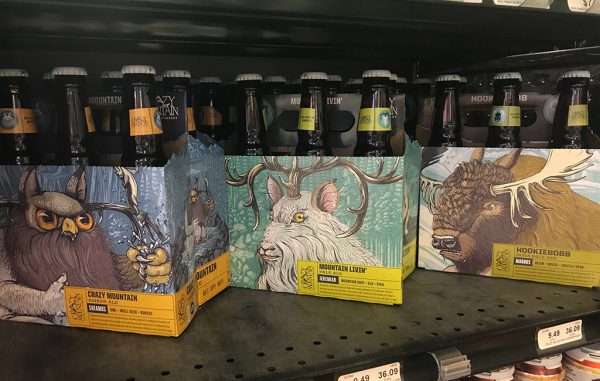This story first ran on BizWest.com, a BusinessDen news partner.
The Brewers Association said craft beer production fell 9 percent by volume from the year before as the pandemic ravaged on-premises drinking, but the association believes the industry avoided widespread collapse.
The 2020 report from the Boulder-based trade group said craft and independent brewers produced 23.1 million barrels last year, while craft’s market share in the wider brewing industry fell 1.3 percentage points to 12.3 percent.
New Belgium Brewing Co.’s sale to a subsidiary of Japanese brewing conglomerate Kirin Holdings Co. Ltd. slightly obscures those figures. The brewery contributed about 900,000 barrels of beer to the industry’s total in 2019 before it was disqualified from the BA’s count of craft breweries, which likely makes the true production drop last year less steep.
In a call with reporters Tuesday morning, BA economist Bart Watson said there were some regional differences in production due to lockdown rules across the country. He said Colorado likely posted less of a drop than the 9 percent figure nationwide last year.
The BA intends to release specific state-by-state figures soon.
Watson is predicting that craft production volume will rise by 5 percent to 6 percent this year, but that still won’t put the industry back to similar production numbers it had in 2019.
However, the number of craft breweries hit a new high in 2020, hitting a total of 8,764. The country gained a net total of 340 new craft breweries during the year, even though the rate of new openings declined by about a third year-over-year. Surveys attributed that drop in half parts to the pandemic and the increasing competition within the craft market.
While that growth is encouraging, the craft industry has yet to recover from mass layoffs. The BA estimated that 14 percent of direct employees within its membership were laid off in 2020.
Watson expects those jobs to return as mass-vaccinations against COVID allow in-person hospitality to start recovering from a difficult several months.
“With vaccinations and consumers more comfortable visiting their local bar, restaurant or brewery, I think we’re hopefully starting to see signs that we’re turning the corner now,” he said.
However, he said brewers should consider the effect of learned habits from their consumers, especially those that could want to keep buying beer to-go and consuming at home rather than buying drafts at the brewery taproom.
This story first ran on BizWest.com, a BusinessDen news partner.
The Brewers Association said craft beer production fell 9 percent by volume from the year before as the pandemic ravaged on-premises drinking, but the association believes the industry avoided widespread collapse.
The 2020 report from the Boulder-based trade group said craft and independent brewers produced 23.1 million barrels last year, while craft’s market share in the wider brewing industry fell 1.3 percentage points to 12.3 percent.
New Belgium Brewing Co.’s sale to a subsidiary of Japanese brewing conglomerate Kirin Holdings Co. Ltd. slightly obscures those figures. The brewery contributed about 900,000 barrels of beer to the industry’s total in 2019 before it was disqualified from the BA’s count of craft breweries, which likely makes the true production drop last year less steep.
In a call with reporters Tuesday morning, BA economist Bart Watson said there were some regional differences in production due to lockdown rules across the country. He said Colorado likely posted less of a drop than the 9 percent figure nationwide last year.
The BA intends to release specific state-by-state figures soon.
Watson is predicting that craft production volume will rise by 5 percent to 6 percent this year, but that still won’t put the industry back to similar production numbers it had in 2019.
However, the number of craft breweries hit a new high in 2020, hitting a total of 8,764. The country gained a net total of 340 new craft breweries during the year, even though the rate of new openings declined by about a third year-over-year. Surveys attributed that drop in half parts to the pandemic and the increasing competition within the craft market.
While that growth is encouraging, the craft industry has yet to recover from mass layoffs. The BA estimated that 14 percent of direct employees within its membership were laid off in 2020.
Watson expects those jobs to return as mass-vaccinations against COVID allow in-person hospitality to start recovering from a difficult several months.
“With vaccinations and consumers more comfortable visiting their local bar, restaurant or brewery, I think we’re hopefully starting to see signs that we’re turning the corner now,” he said.
However, he said brewers should consider the effect of learned habits from their consumers, especially those that could want to keep buying beer to-go and consuming at home rather than buying drafts at the brewery taproom.


Leave a Reply